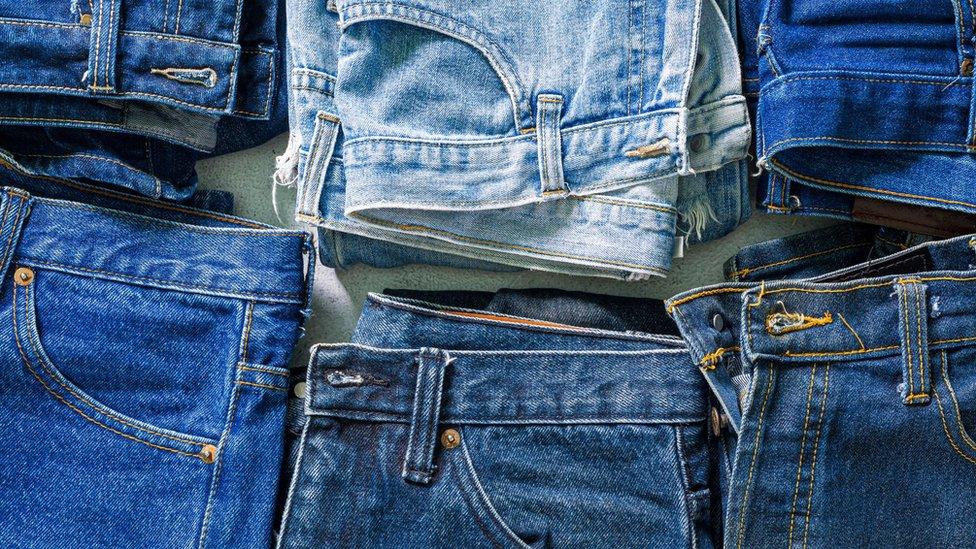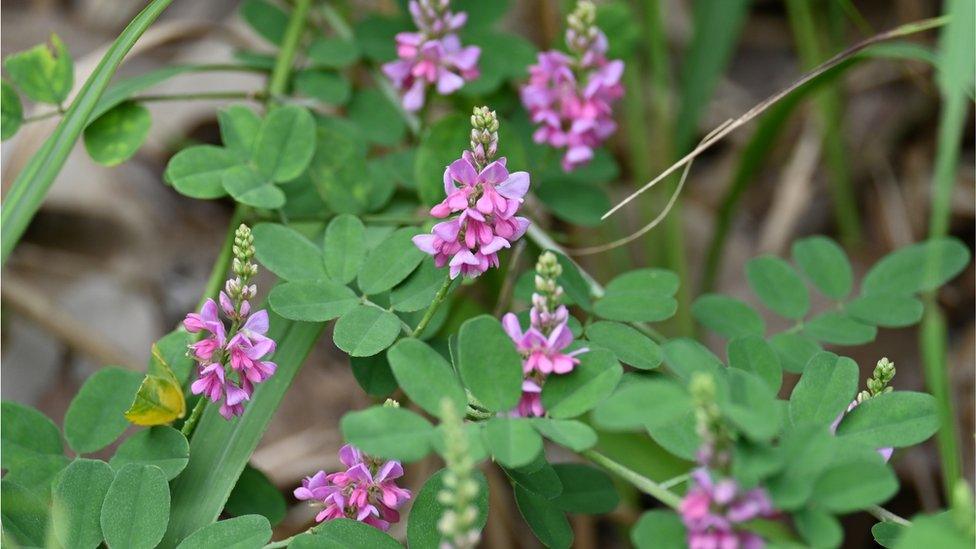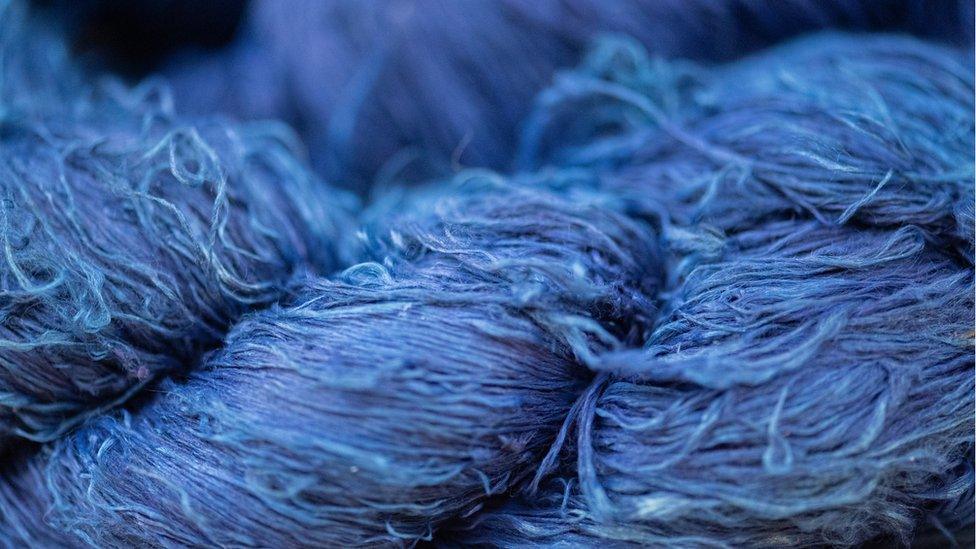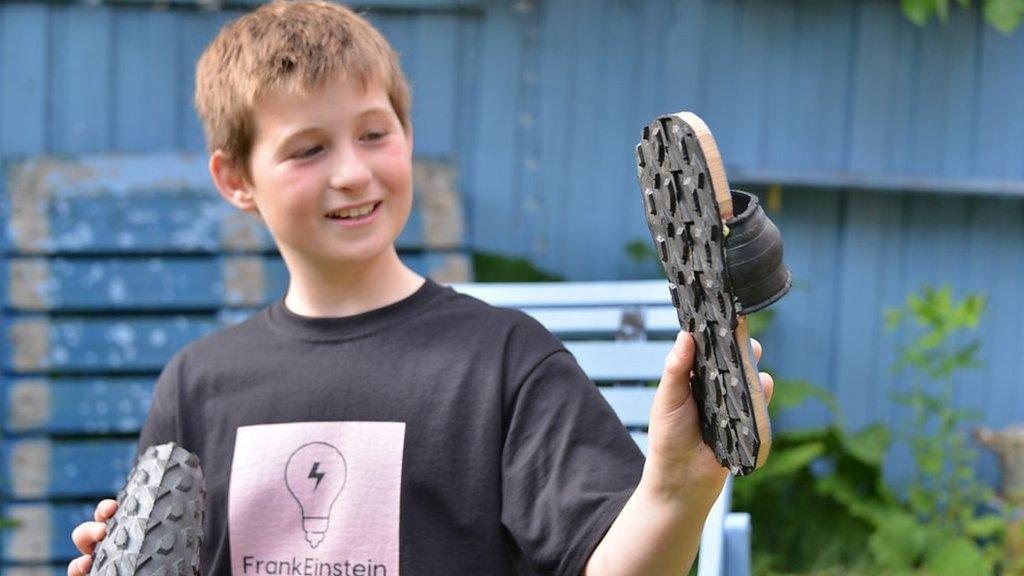Are jeans about to become more green?
- Published
- comments

A new technique for dyeing jeans blue could be much more environmentally friendly according to scientists.
In order for denim - the material used to make jeans - to get its blue colour, jean-makers often use chemicals to dye the material, which can be harmful to those making them, and pollute the environment.
However, a team of researchers from the University of Denmark have discovered a potential solution that could reduce the impact on the environment by around 90% - and works without the need for toxic chemicals.
By using a natural chemical called indican, made from plants, to dye the material then expose it to light, the team discovered they could colour the material in a much more environmentally-friendly way.
Find out more about indican and how jeans are normally dyed below...
How are jeans normally dyed blue?

Blue denim usually gets its colour from indigo.
Indigo dye originally comes from plants in the Indigofera species, and has been used throughout history all over the world as a way to dye things.
However, today indigo dye is usually created synthetically, not naturally, in a laboratory using chemicals.
The oldest known fabric to be dyed indigo, dates back 6,000 years ago. It was discovered in Huaca Prieta, in Peru.
The problem fabric-makers face when making blue denim, is that indigo is not soluble - meaning that it doesn't dissolve in water.
So, makers often treat the indigo dye using chemicals, such as sodium dithionite, so that the dye will stick better to the material, as well as using things like bleach to lighten the material to get the shade they want.
This dyeing process is repeated many times until the material has absorbed the colour, and means that a lot of water and energy is used during the process.
The chemicals used also produce toxic fumes that can risk the health of the people who work there, and also lead to toxic pollution if the waste water is released into the environment.
How is indican different?

Indican is a natural chemical compound which is found in Indigofera plants.
However, it is different from indigo in that it is colourless and soluble in water - meaning it is easily absorbed.
"That's why it became such an appealing solution to this because you can simply omit so many of the harsh chemicals." said Ditte Hededam Welner, the lead researcher behind the new study.
When the dyed fabric is exposed to light for a few hours, it turns the colourless indican into indigo, giving it a blue colour.
"I don't know if consumers would like that, but, over time, as you wear a pair of indican-soaked jeans out in the sunlight, then it will turn blue," says Ditte Hededam Welner. "I think that's a gimmick, right? You could do that."

The scientists also discovered they can use an enzyme instead of light to help speed up the process of the chemical reaction.
When the light and enzyme indican dyeing processes were assessed by the European Commission - which takes into account how much carbon dioxide is emitted, how much land and water is used and how it affects the ozone layer - they found that using light reduced the environmental impact of dyeing by 73%, and using enzymes by 92%, compared to the usual indigo dyeing process.
The researchers think that, if indican were used instead of indigo to dye the nearly four billion jeans made each year, then it could have a significant impact on reducing toxic waste and global CO2 emissions.
They say more research is needed to figure out how to make the process cheaper and quicker.
- Published9 November 2021

- Published10 August 2021

- Published24 August 2021

